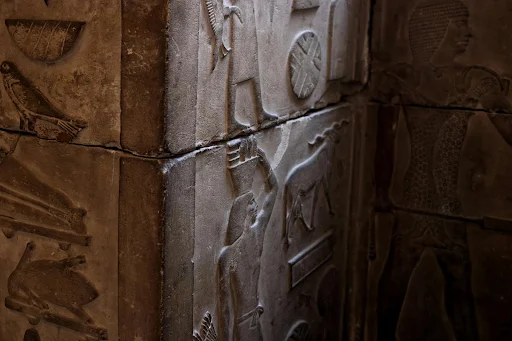The Egyptian pyramids are among the most famous and awe-inspiring structures in the world. These ancient monuments, built thousands of years ago, continue to captivate historians, archaeologists, and travelers alike. The pyramids symbolize the grandeur of the ancient Egyptian civilization, showcasing their advanced engineering skills, religious beliefs, and dedication to the afterlife.
The History of the Egyptian Pyramids
The history of the pyramids dates back to the Third Dynasty of Egypt, around 2630 BCE, when King Djoser ordered the construction of the Step Pyramid at Saqqara. This marked the beginning of pyramid construction, which evolved significantly over time. The most famous pyramids, including those at Giza, were built during the Fourth Dynasty (circa 2600–2500 BCE).
The Oldest Pyramid: The Step Pyramid of Djoser
The Step Pyramid of Djoser, designed by the architect Imhotep, was the first large-scale stone structure in human history. Unlike the smooth-sided pyramids that followed, this pyramid was built in a step-like design, consisting of six layers stacked on top of each other. It served as a tomb for Pharaoh Djoser and set the foundation for future pyramid construction.
The Great Pyramid of Giza: A Marvel of Engineering
The Great Pyramid of Giza, also known as the Pyramid of Khufu (Cheops), is the largest and most famous of all Egyptian pyramids. It was built during the reign of Pharaoh Khufu (circa 2580–2560 BCE) and remains one of the Seven Wonders of the Ancient World.
How Was the Great Pyramid Built?
One of the greatest mysteries surrounding the Great Pyramid is how it was built. Historians and archaeologists believe that:
Over 2.3 million limestone blocks were used in its construction.
Each block weighed between 2.5 and 15 tons.
More than 100,000 skilled workers and laborers participated in building the pyramid.
The pyramid was originally 146.6 meters (481 feet) tall, but due to erosion and missing stones, it now stands at 138.8 meters (455 feet).
Scholars theorize that ramps, pulleys, and levers played a crucial role in moving and placing the heavy stones. However, the exact construction techniques remain a subject of debate.
The Pyramids of Giza: The Royal Necropolis
The Great Pyramid is not the only pyramid at Giza. The Giza plateau is home to three major pyramids:
The Great Pyramid of Khufu – The largest and most famous.
The Pyramid of Khafre – Built by Khufu’s son, Pharaoh Khafre, and appears taller due to its higher elevation.
The Pyramid of Menkaure – The smallest of the three, built for Pharaoh Menkaure.
These pyramids were part of a larger necropolis that included temples, smaller pyramids for queens, and the Great Sphinx.
The Great Sphinx
Adjacent to the Pyramid of Khafre stands the Great Sphinx of Giza, a massive limestone statue with the body of a lion and the head of a pharaoh. It is believed to represent Pharaoh Khafre and serves as a guardian of the pyramids.
The Purpose of the Pyramids
The primary purpose of the pyramids was to serve as royal tombs. The ancient Egyptians believed in the afterlife, and pharaohs needed elaborate tombs to protect their bodies and treasures. The pyramids were designed to ensure the safe journey of the deceased ruler’s soul to the afterlife.
Inside the Pyramids
Inside the pyramids, archaeologists have discovered:
Burial chambers where the pharaohs were laid to rest.
Passageways and tunnels leading to hidden rooms.
Hieroglyphic inscriptions describing the pharaoh's achievements and religious beliefs.
Artifacts and treasures, though many were looted over the centuries.
The Mystery of Pyramid Construction
Despite extensive research, many aspects of pyramid construction remain a mystery. Some theories include:
The Ramp Theory – Suggests that ramps were used to transport the heavy limestone blocks.
The Spiral Ramp Theory – Proposes that ramps were built around the pyramid as construction progressed.
The Water Shaft Theory – Suggests that water channels helped lift the stones into place.
Although modern technology has provided insights, the exact methods used by ancient Egyptians remain unknown.
The Legacy of the Pyramids
The Egyptian pyramids continue to inspire awe and admiration worldwide. They have influenced architecture, literature, and culture across civilizations. The Great Pyramid of Giza, in particular, stands as a testament to human ingenuity and remains a major tourist attraction in Egypt.
Modern Discoveries and Research
Advancements in archaeology and technology have led to new discoveries, such as:
The ScanPyramids Project – Using thermal imaging and cosmic-ray scans, researchers have detected hidden chambers inside the Great Pyramid.
New Tombs and Artifacts – Ongoing excavations continue to uncover tombs, statues, and inscriptions that provide more insight into ancient Egyptian life.
Visiting the Pyramids Today
The Pyramids of Giza attract millions of visitors every year. Tourists can:
Explore the Great Pyramid’s interior.
Visit the Sphinx and nearby temples.
Take a camel ride around the pyramids.
Learn about ancient Egypt at the nearby museums.
Conclusion
The Egyptian pyramids remain one of the greatest architectural achievements in human history. Built with incredible precision and ingenuity, these ancient structures continue to stand tall as symbols of Egypt’s rich heritage and the enduring mysteries of the past. Whether you are a history enthusiast, a traveler, or simply fascinated by ancient civilizations, the pyramids are a must-see wonder that showcases the brilliance of human civilization.



Comments
Post a Comment